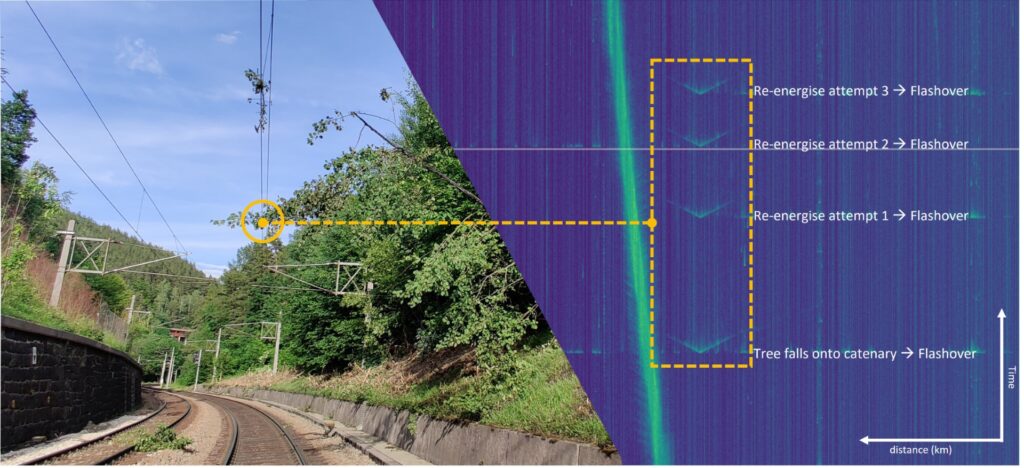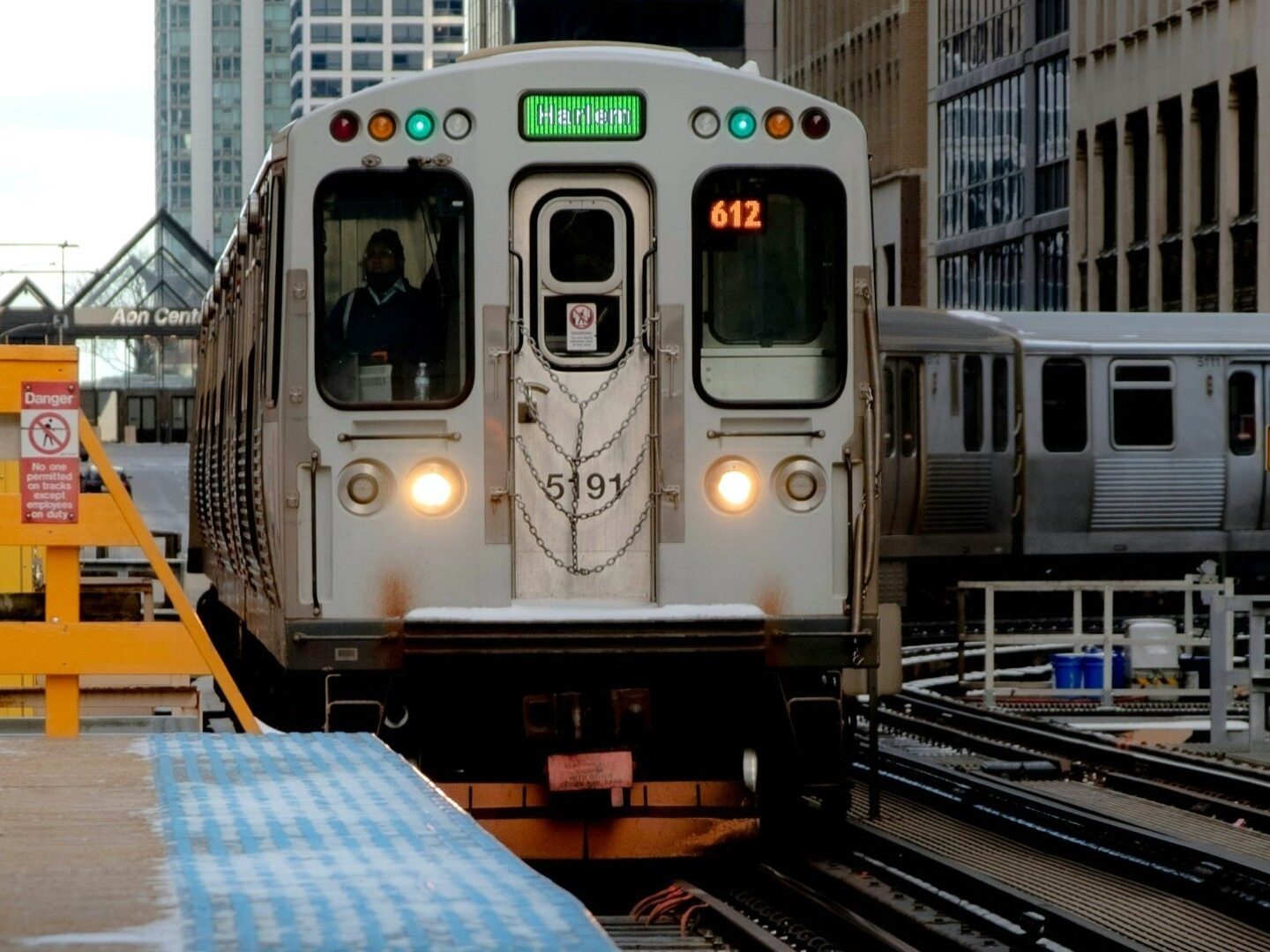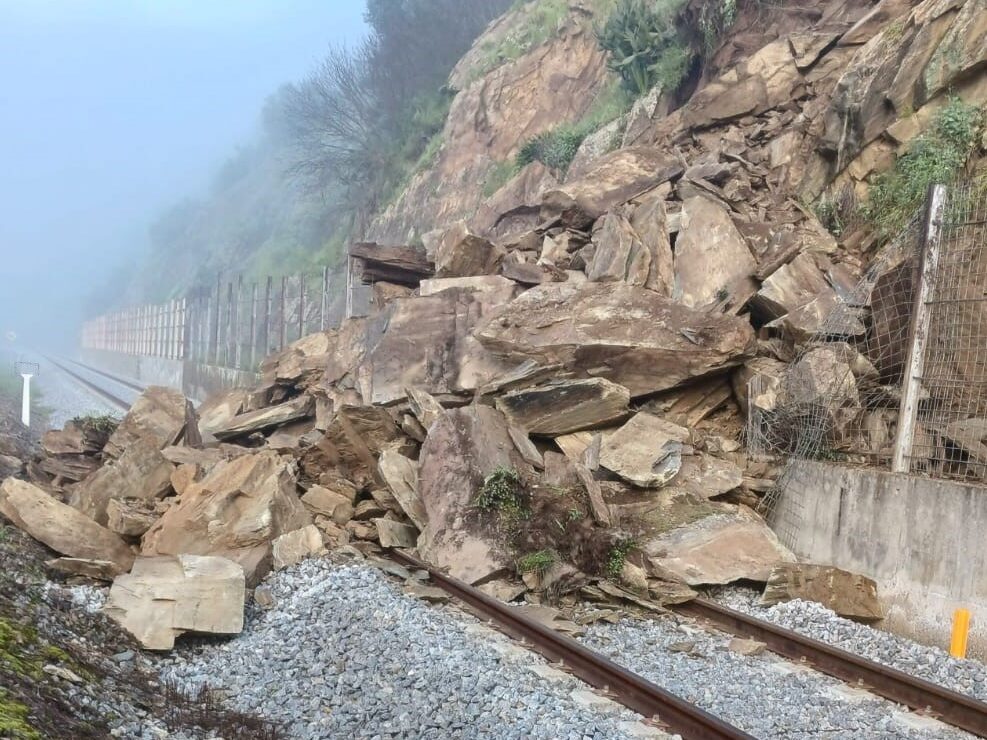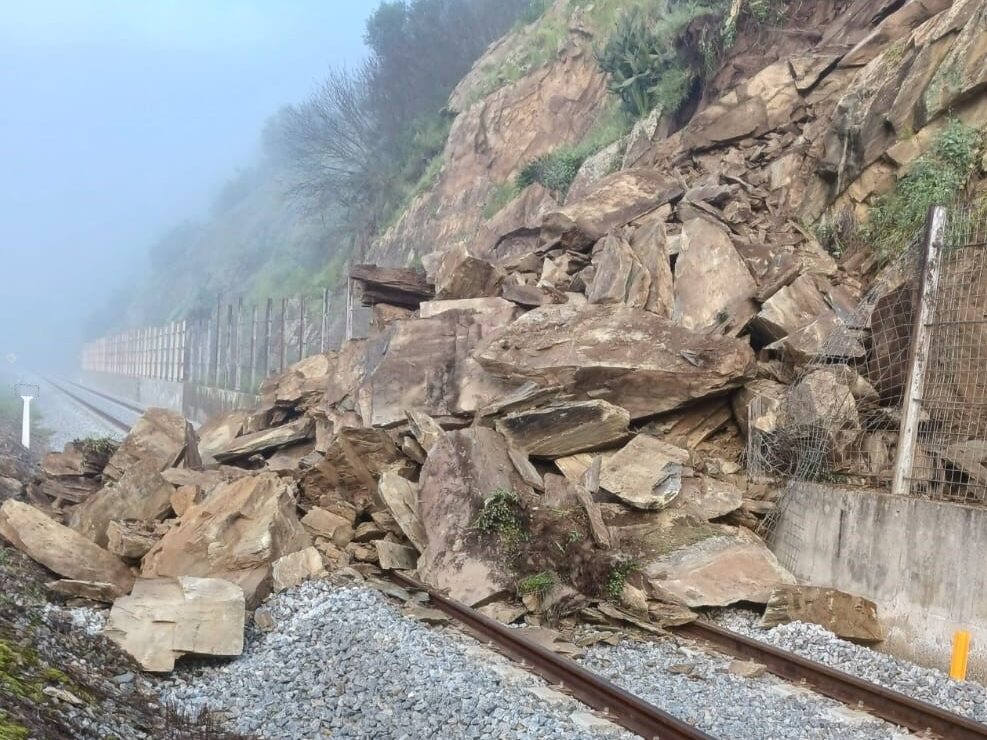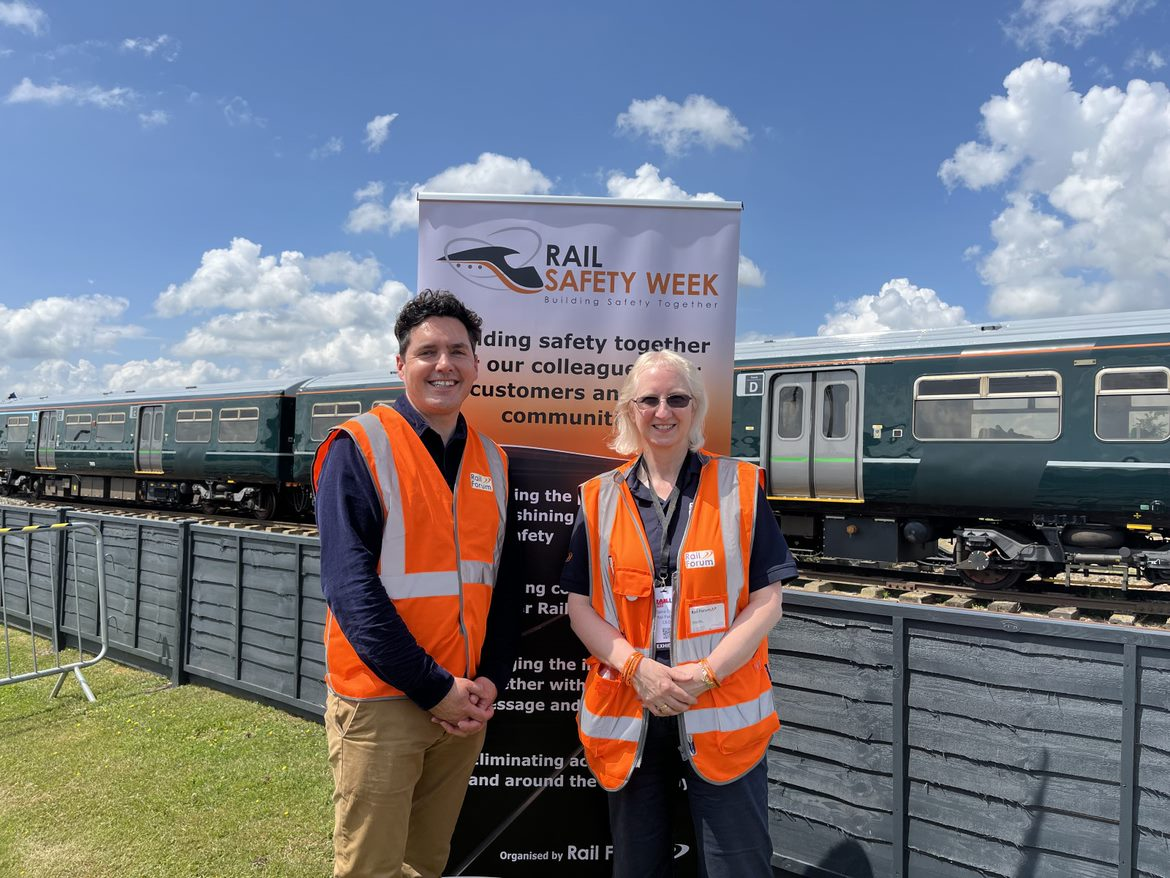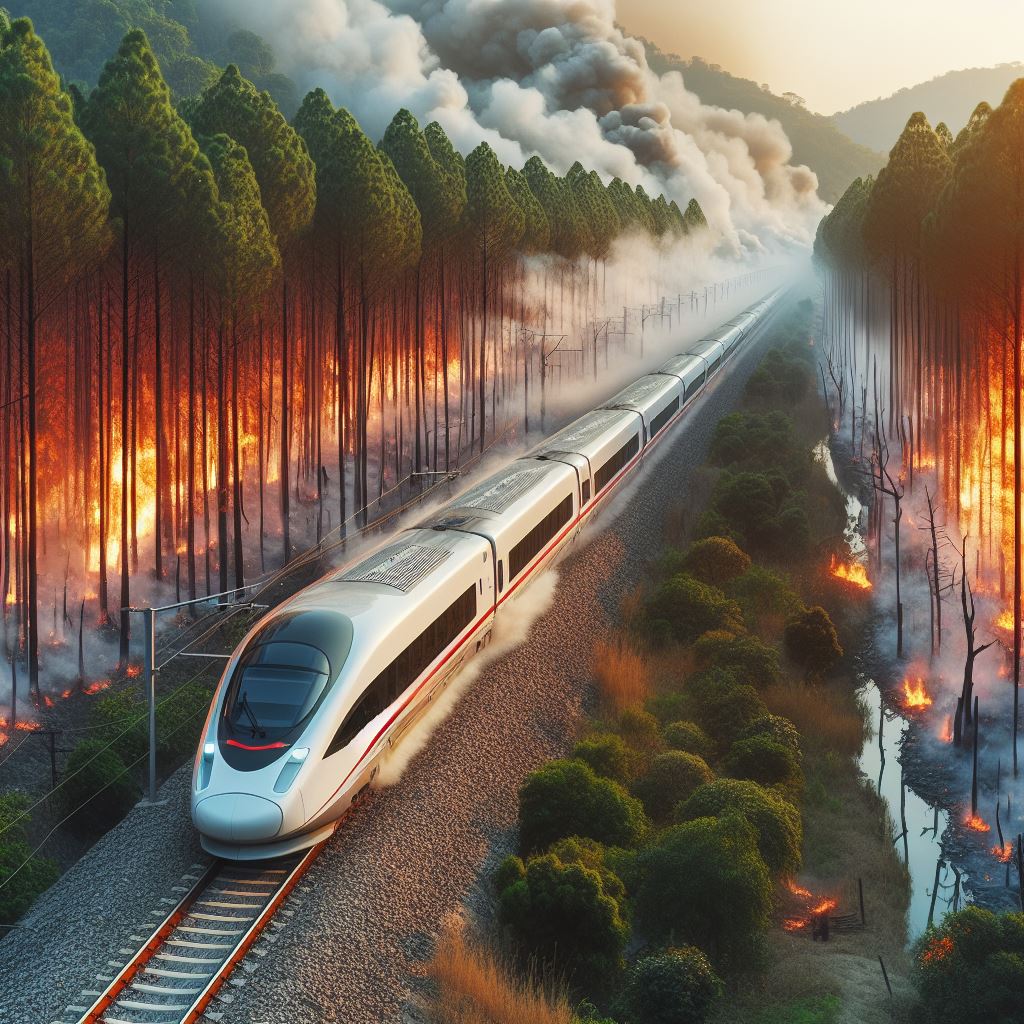As our climate changes and our planet warms, there is more energy in our weather, which increases the challenge of operating a reliable and available railway. I’ve explored the challenges of heat and rain on railways in previous articles, now let’s look at the effects of wind.
High winds provide many challenges, of which one is bringing objects from outside the railway into and onto it.
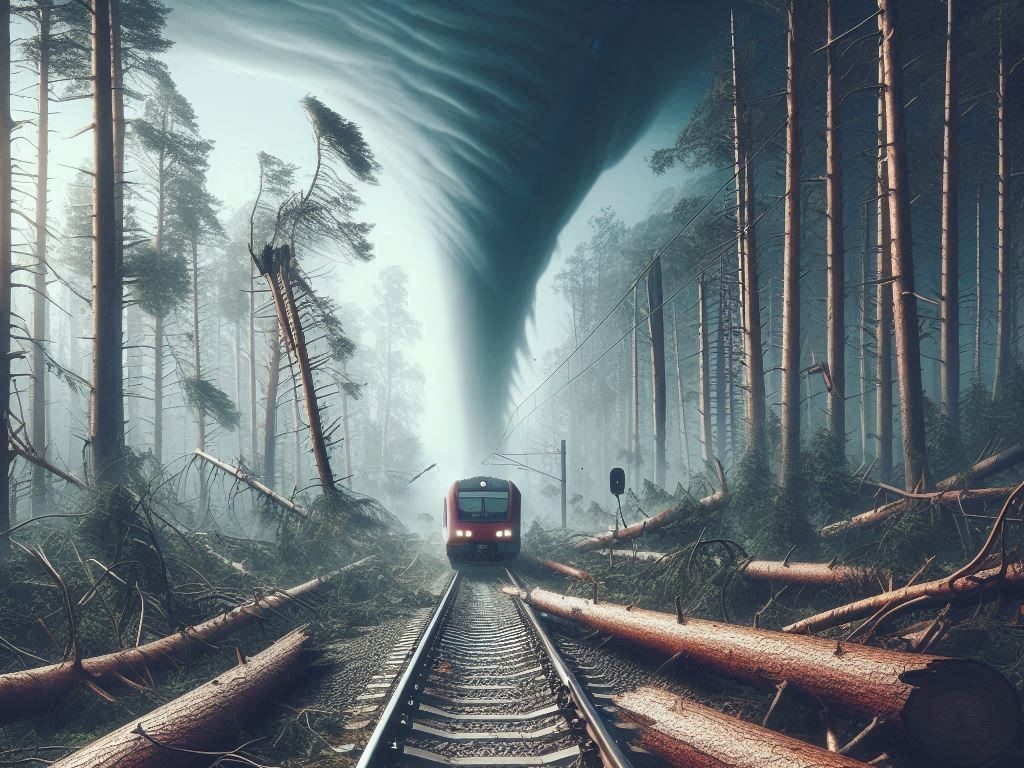
Foreign Objects
Windblown objects landing on the railway can vary hugely in size, type and number. Let’s explore a few types:
Leaves
In the seasons of autumn and fall, leaves whipped by wind can be deposited on the rail surface leading to the infamous “leaves on the line” issues. The leaves when squashed by the passage of traffic turn into a slippery film equivalent to black ice on a roads surface. This leaf film can cause adhesion problems resulting in operational issues where trains slip and stall and even accidents where they cannot stop safely such as this one from Salisbury in the UK.
A multifaceted approach to coping with this challenge is often employed. Timetables can be adjusted to give trains more stopping distance; vegetation can be minimised along the rail corridor; and specialist trains are used to remove leaf film from the rail via a variety of methods including high pressure water jets. Sand is also applied to the wheel/rail interface either directly from sanders on the vehicle itself, or via direct application to the head of the rail as a gel or paste in known problem areas. Whilst sand can help promote adhesion between wheel and rail – it can pose other challenges in different regions.
Sand
In drier desert areas windblown sand can become a major issue, drifting across the track to obstruct traffic from passing, or in severe cases potentially derailing vehicles should a vehicle hit a sand drift at speed.
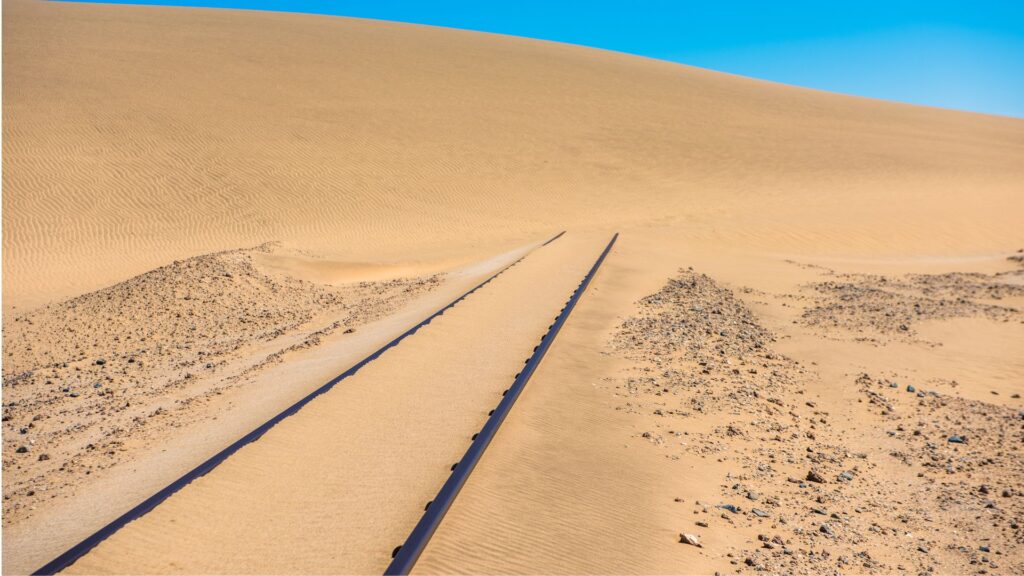
Again, many approaches are needed to manage the challenge of drifting sand, from its removal using specialist rail machinery through to managing the track elevation and surrounding topography to encourage sand deposits away from the track bed rather than onto it.
Snow
Snow poses similar challenges to sand, with windblown snow drifts being a hazard to reliable rail operations in colder regions. Specialist equipment is needed to remove snow from obstructing tracks after storm events and of course if the temperature rapidly rises the volume of snow melt can cause a variety of flooding and other water related challenges for the railway too.
Water / Waves
In coastal routes and those travelling next to large bodies of water, the action of high winds can cause significant waves and spray to form. My previous blog went into some detail on the destructive power of water, but here are a few reminders of how wind and waves can challenge the railway.
Water and waves can lead to:
- Erosion / Washout of the track or substructure due to wave action
- Scour / undermining of supporting structures such as bridge support piers and
- Flooding due to wind driven storm surge
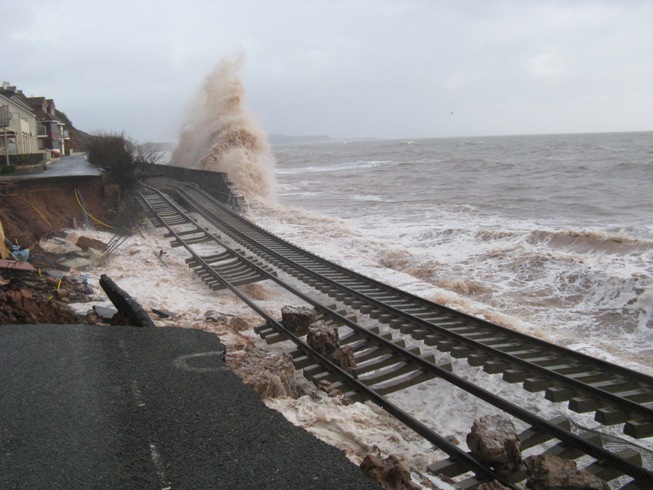
Urban Objects
A smaller scale hazard is manmade objects which are not immune from being blown from nearby properties onto and into railway infrastructure. A couple of the all-too-common offending articles are trampolines and sheds.
Thankfully the lighter nature of these objects rarely results in significant damage to infrastructure or rollingstock damage, but it does result in significant delays to traffic as obstructed routes require clearing.
I can’t currently think of a good way to prevent these from happening other than pre-storm public information campaigns to secure them better!
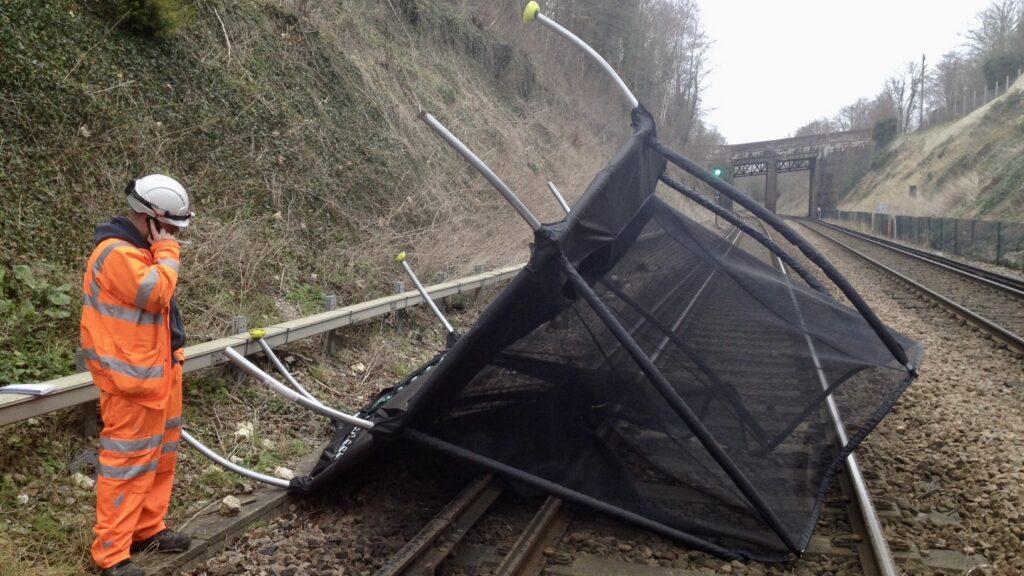
Treefall
Moving up in size and returning to natural hazards, we have falling trees.
Whilst vegetation within the railway corridor is a risk that can be directly controlled, trees outside the railway boundary that are large enough to endanger train traffic can be a tougher challenge.
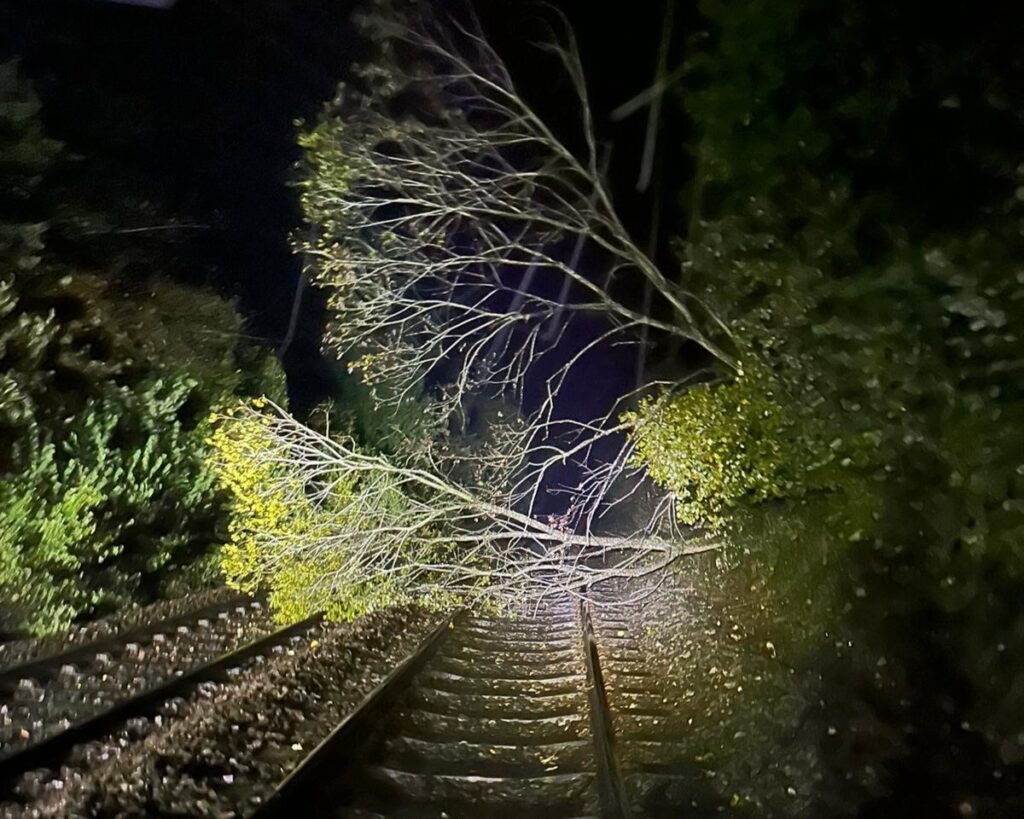
Treefall is one of the use-cases for Distributed Acoustic Sensing we’ve been looking at. George Berkeley asked a question as a philosophical thought experiment “If a tree falls in a forest and no one is around to hear it, does it make a sound?”. Well the answer is a definite yes if Sensonic fiber optic sensing is in place to hear it as we show in this video, here.
This isn’t a commercially available product yet – but if it is of interest to you then contact us to discuss development opportunities.
It isn’t just trees falling that cause issues, excess movement of trees in the wind can cause them to become too close to overhead electrification equipment causing arcing and flashover damage as the electricity jumps through the swaying tree to reach the ground. Distributed acoustic sensing can certainly help with this, as flashover events can be remotely located 10 times more accurately than using traditional means.
Overhead Wiring
Overhead electrification itself is also affected by wind. The many meters of cable and wire strung high in the air are not immune from being displaced by the wind. Whilst tension is applied to the wires, some displacement still occurs and as the wind strengthens displacements increase. As electrification contact wires are designed to “scan” across the pantograph in use (to facilitate even wear of the contact), the contact wire can approach the edge of the pantograph in normal use. Should the wire displacements become excessive due to high winds, then there is the danger of the wire slipping off the pantograph ‘edge’ leading to entanglement with the pantograph causing catastrophic damage. Entanglement with the pantograph potentially leads to wires being pulled down and out of position over significant distances resulting in a costly and disruptive dewirement event that can take many hours, or sometimes even days to repair.
Here is a nice video of the intended scanning of the contact wire across the pantograph at around ~400kph / ~250mph.
Stability / Derailment
Sometimes winds can be powerful enough to endanger the train directly. In the same way road vehicles can be blown over, so too can trains in the right, or should that be wrong? circumstances.
The only effective management for this risk is good weather forecasting / live windspeed measurements at a resolution that captures the local features that can amplify wind loading on trains.
Lastly let’s finish this blustery article with a bang. The most intense and highly localised wind event is a tornado. The huge windspeeds, massive amounts of windswept debris and rapidly varying wind direction make this natural disaster almost impossible to plan for. In this rare example even a stationary freight train is toppled by its power, but thankfully the crew were uninjured. (Warning – Some bad language in the video)
Summing Up
Climate change is expected to bring more intense wind events as weather becomes more energetic. We must be smart about managing risks whilst also responding to resilience challenges and upgrading our rail systems to cope where possible. This helps ensure our trains keep running smoothly and safely both today, tomorrow and also long into the future.
If you are after increased levels of infrastructure information to help to manage these climate challenges and keep trains rolling whatever the weather then let’s talk, and see where we can help.
This article was originally published by Sensonic.


